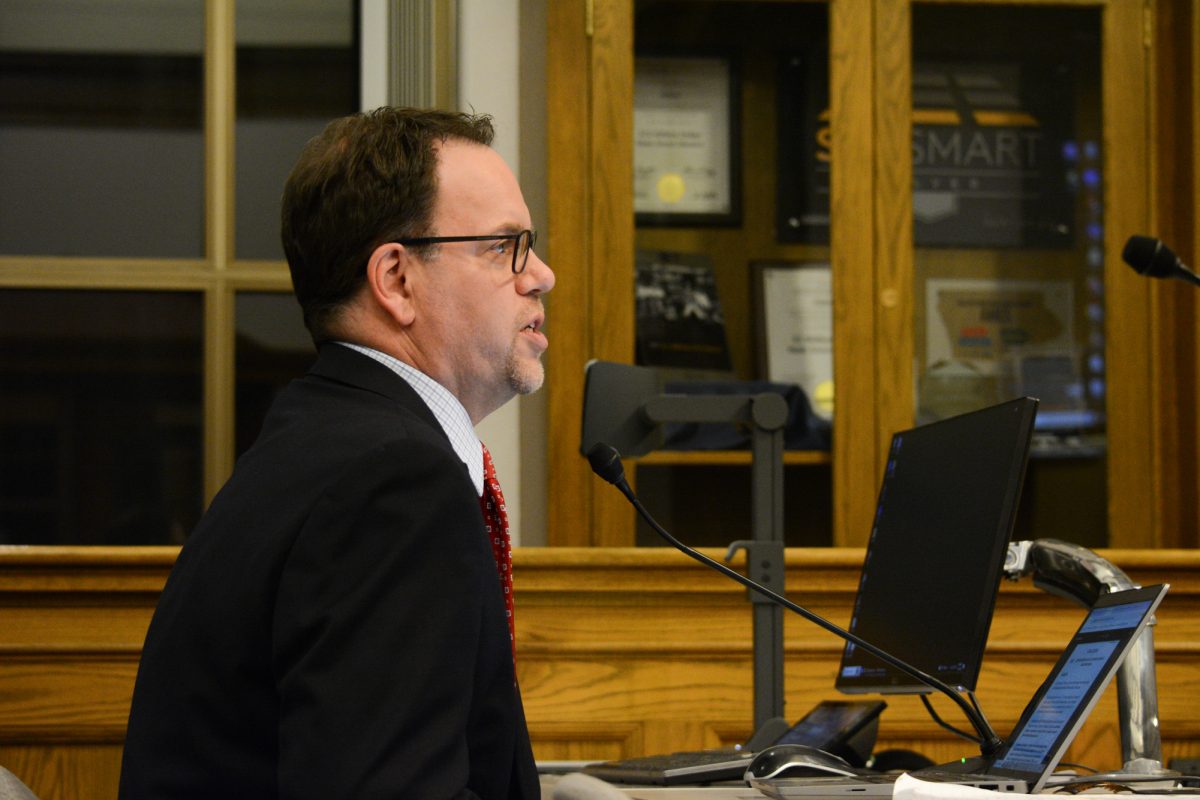At this week’s Board of Regents meeting, the proposed changes to the health and dental insurance rates are concerning faculty and students. Rates for ISU faculty and students registered for the Student and Scholar Insurance Program are set to go up.
The notable changes are an increase in deductibles for ISU BlueHMO and ISU BluePPO.
According to the Regents’ agenda item, the coinsurance for both plans is expected to increase. Coinsurance for BluePPO would go up from 10% to 20% and BlueHMO would go up from 0% to 10%. For someone on the HMO plan, that would mean that an employee with their family on their plan would rise $41, from $193 a month (2023) to $234 a month starting January 2024. The BluePPO plan would rise $43, from $382 to $425.
In addition to the proposed changes to copays and premiums, the waiver for mental health and substance abuse is proposed to be removed from the plan. The waiver allows students, faculty and staff to get mental health and substance abuse treatment without paying for anything out of pocket. The changes coming in January would remove that from the plan.
The proposed plan has prompted some to voice their discontent with how staff, faculty and students have been treated. Sara Parris, associate director of administrative services at the student health center, has taken action to create awareness for this change. Parris wrote a letter to the Iowa State Administrators calling for a 2% mandatory pay increase for all faculty and professional and scientific staff in January 2024. The second call to action is to implement the 3% performance-based increase outlined in the memo sent out on Sept. 18 alongside the 2% mandatory increase. Lastly, the letter calls for university leaders to demonstrate commitment to developing and implementing a sustainable budget strategy that prioritizes staff compensation and increases. The letter has more than 700 signatures as of Sept. 26.
“I hope that the letter creates awareness … I do not think that many employees are aware about how much these changes will impact their finances,” Parris said.
Another concern is that the changes to the insurance will affect staff and faculty differently. Barb Wollan, a human sciences specialist for the University Extension and Outreach, had a similar concern.
“The changes will most likely hit moderate-income employees more than higher-paid employees,” Wollan said.
The university has proposed a raise plan to give those working at Iowa State a 1% to 3% pay increase based on performance. Both Parris and Laura Kilbride, a student services specialist for the College of Human Sciences voiced a concern with this plan, saying even if someone were to get the 3% increase, it would not be enough to offset the additional costs the new plan would add to the budgets of students, staff and faculty.
“After budgeting for the changes, I would be making $47 less than last year … that doesn’t even take into account the dental plan changing as well,” Kilbride said.
Parris, Wollan and Kilbride all voiced concerns centered around the fact that the university has used its “exceptional benefits” to attract and retain faculty, staff and students despite low pay increases. With the changes in the new plan, there is less incentive to stay at Iowa State. The college has seen a decline in retention since 2020, and this could further hurt the amount of staff and faculty that are needed to maintain an effective and working body.
University Human Resources did not immediately respond to comment for this article.





















Marcus | Sep 27, 2023 at 6:25 am
As someone who manages a large healthcare plan for 4,000 employees, healthcare is expensive and the costs cannot be borne solely by the employer. Whining about it, will not change the increases and pushing employers to make higher wage increases just pushes the cost to other areas but doesn’t solve the cost problem. Productivity needs to be found to pay for the higher costs to keep the employer whole overall…productivity is code for cost reduction. In my experience, this is not a strong suit of U’s as they have taxing power like no other…just raise tuition.
That said, focusing on healthcare costs, employers can make plan design changes to try to mitigate the cost increases by both the employer and employee. I know nothing about the plan design of ISU. However, I’m guessing they are self insured. If they are not, they likely should be. This means that BC is only an administrator of the plan and that ISU pays 100% of all claims out of pocket. They likely also have a stop loss insurance policy for any catastrophic claims over a certain amount like $250,000.. I would recommend that the U look at other plan designs like high deductible plans if they already have not. These are much better for employees financially as the out of pocket maxes are much lower than the legacy HMO and PPO plans and they offer HSA accounts for employees to save for healthcare. There is a fair bit of change management for employees as they have to get used to paying for everything out of pocket until they hit their deductible which can be $2,000 individual and $4,000 for a family. The benefit to the employee is that 100% of costs are covered after the deductible and it puts more responsibility for healthcare choice on them. The benefit to the employer is that employees make better choices on healthcare when they are paying for it out of pocket. Like, they don’t go to the ER for a headache. All preventative care is covered 100% with no deductible. Employees sometimes have a hard time getting their heads wrapped around the change as they like paying a co-pay per visit. However, in the long run, between premiums, co-pays, co-insurance and out of pocket maxes, the employee is paying a lot more for their healthcare. Benchmark share of total healthcare costs is 25% employee and 75% employer.